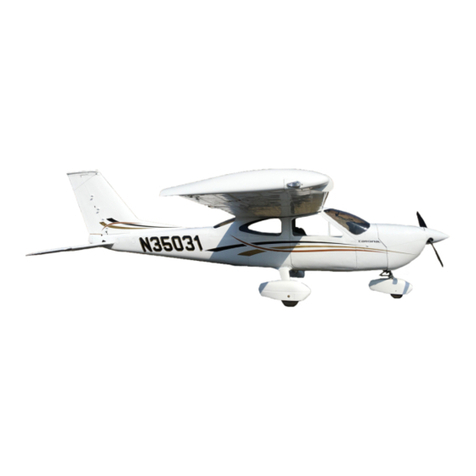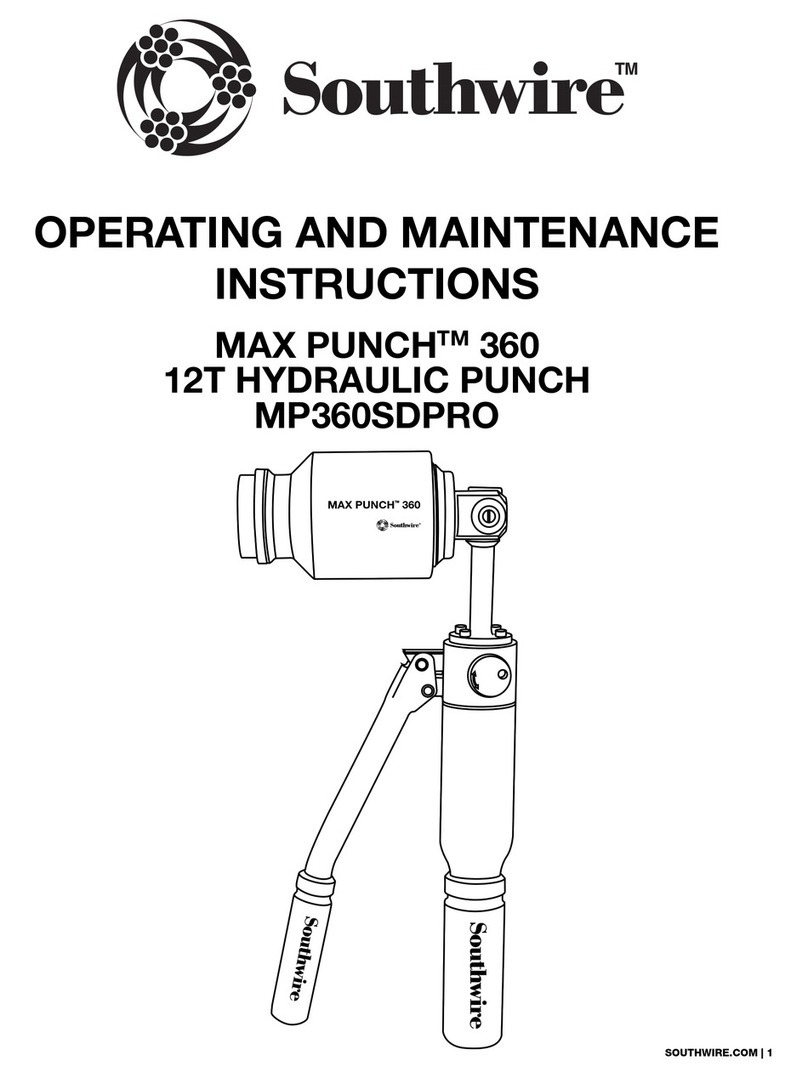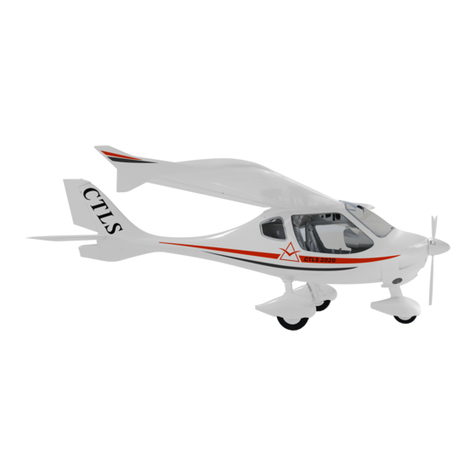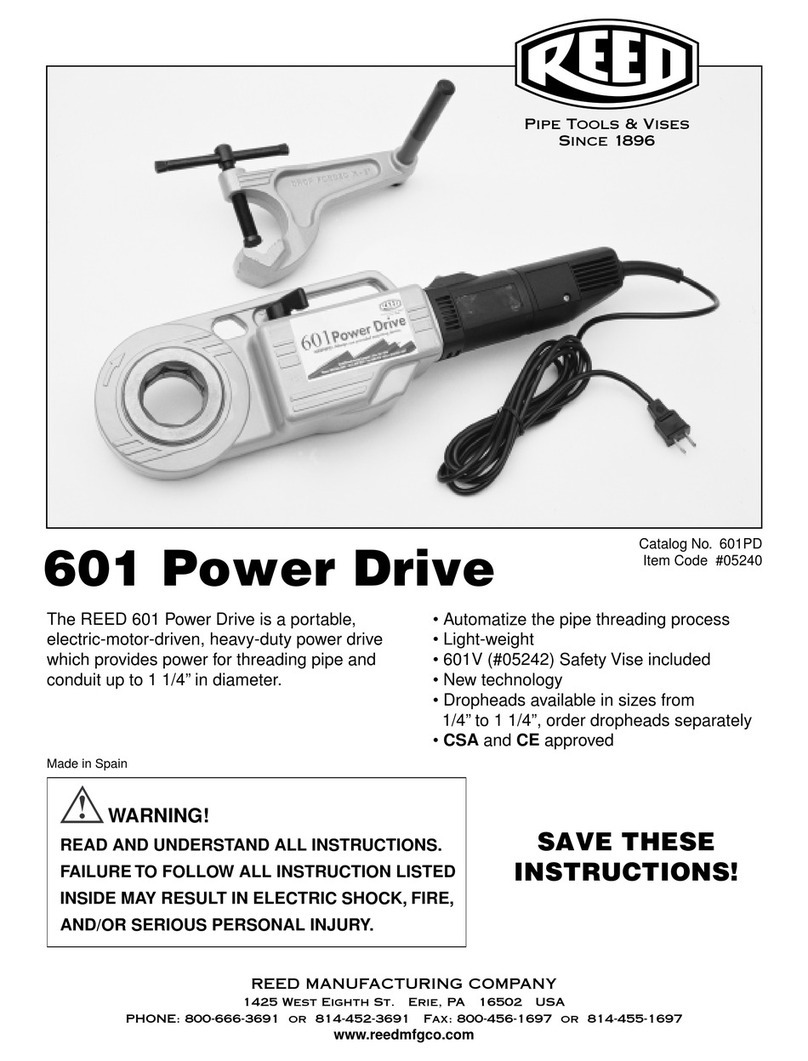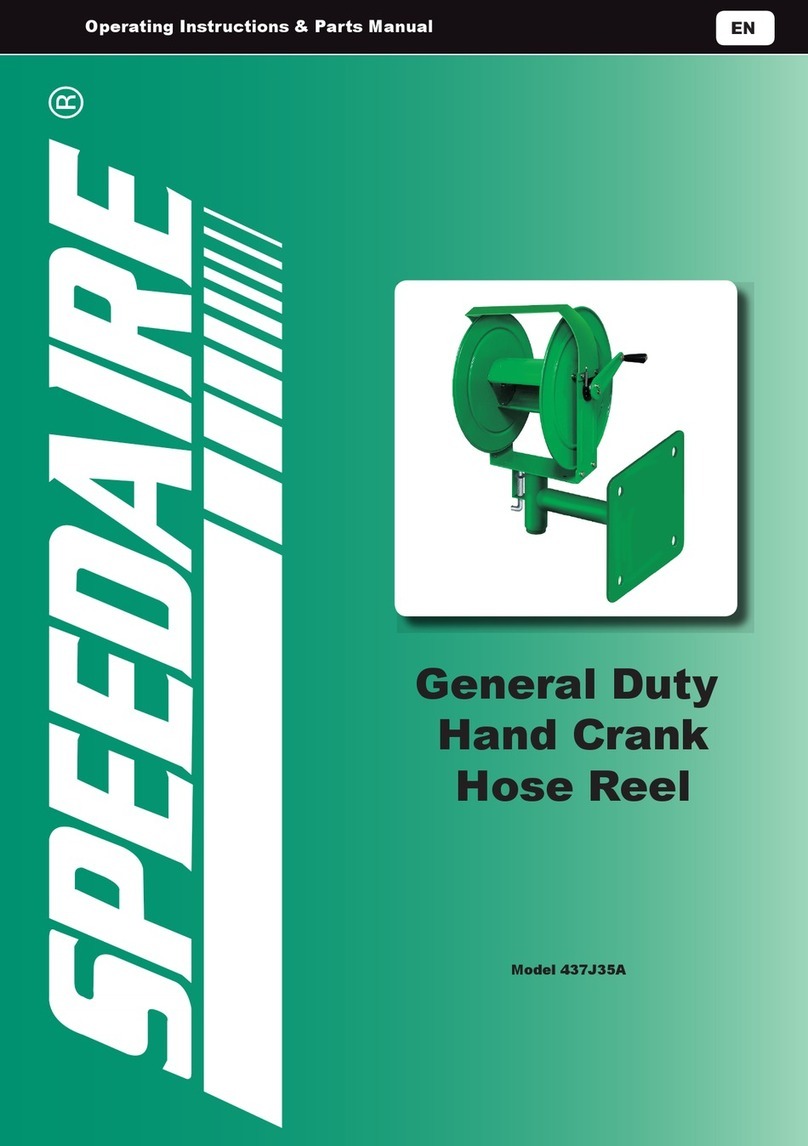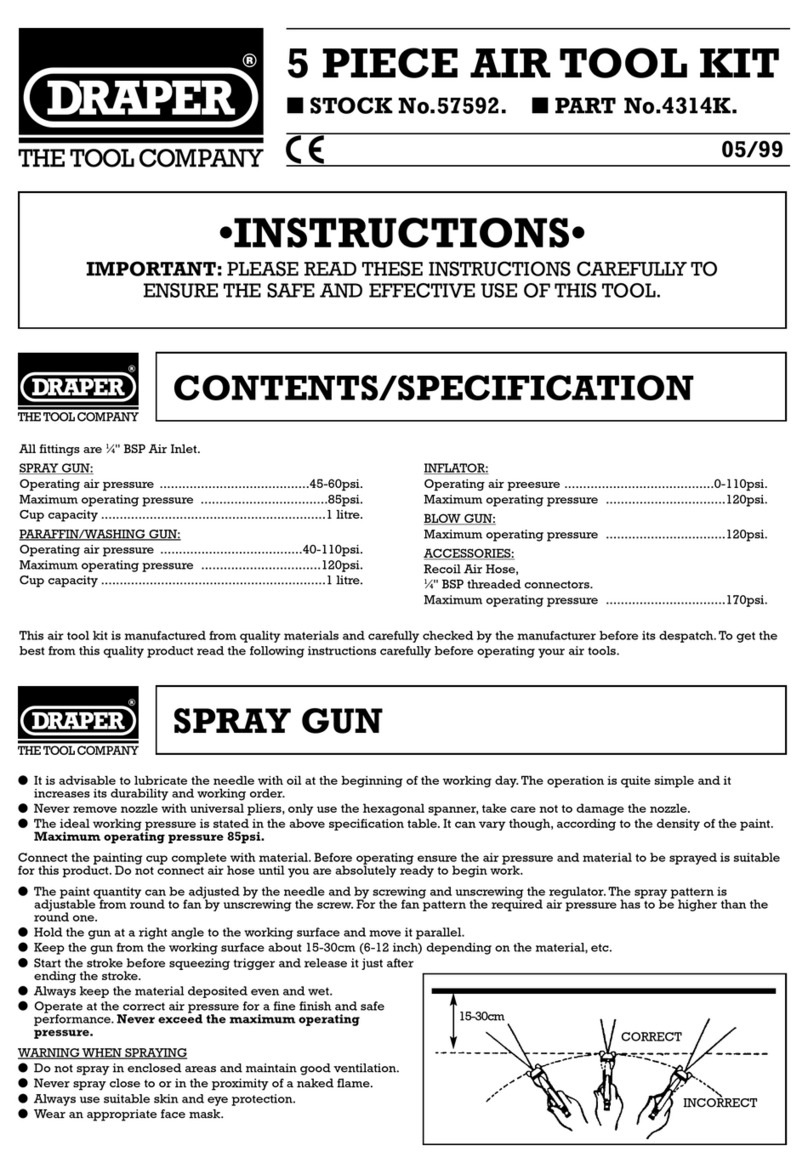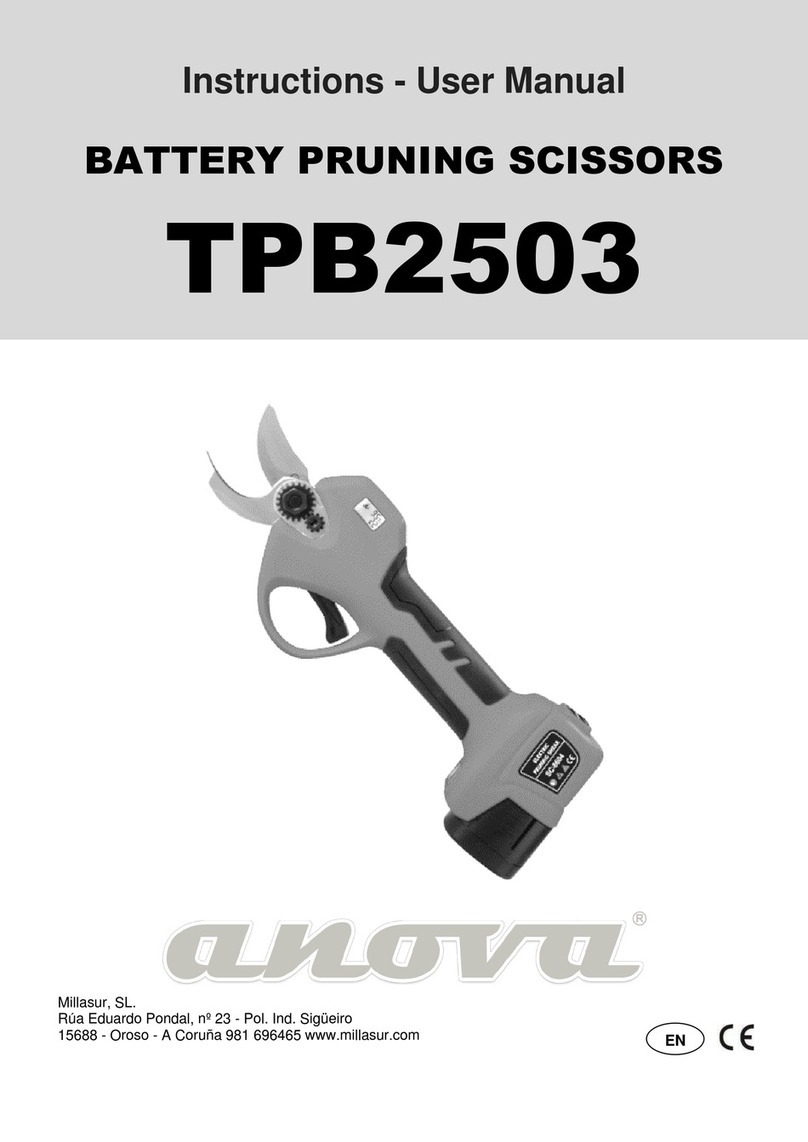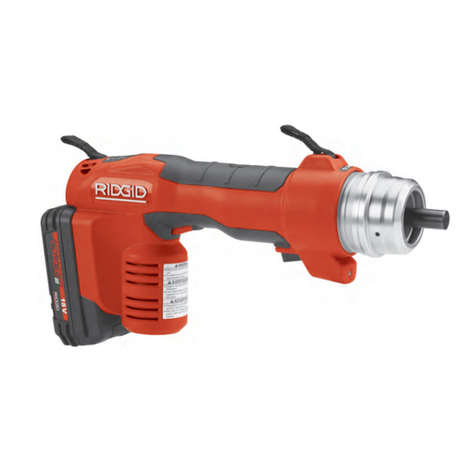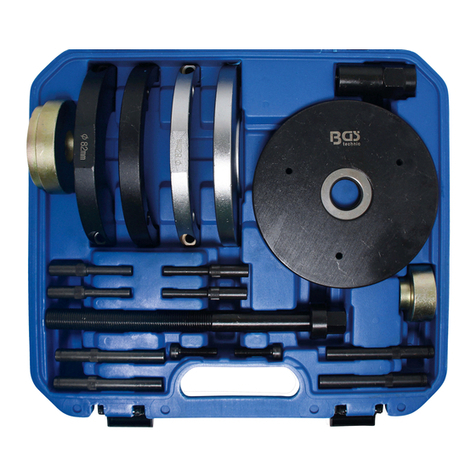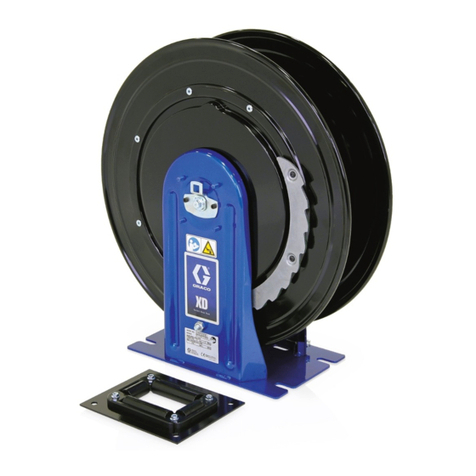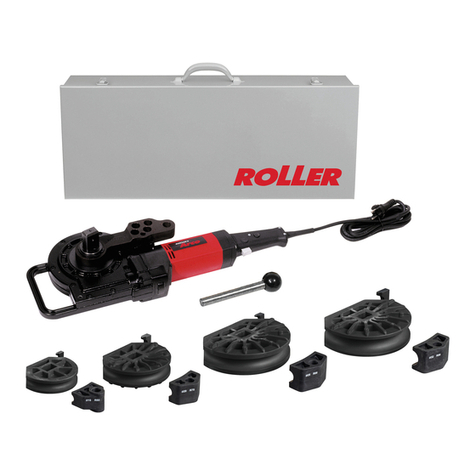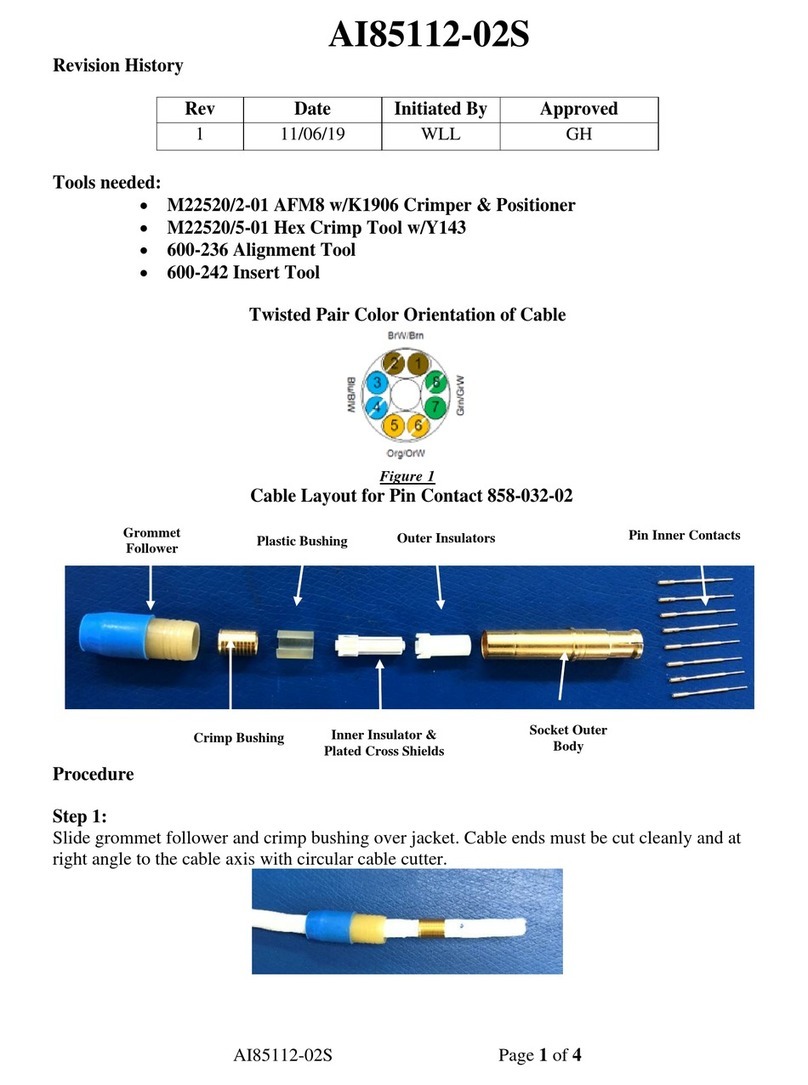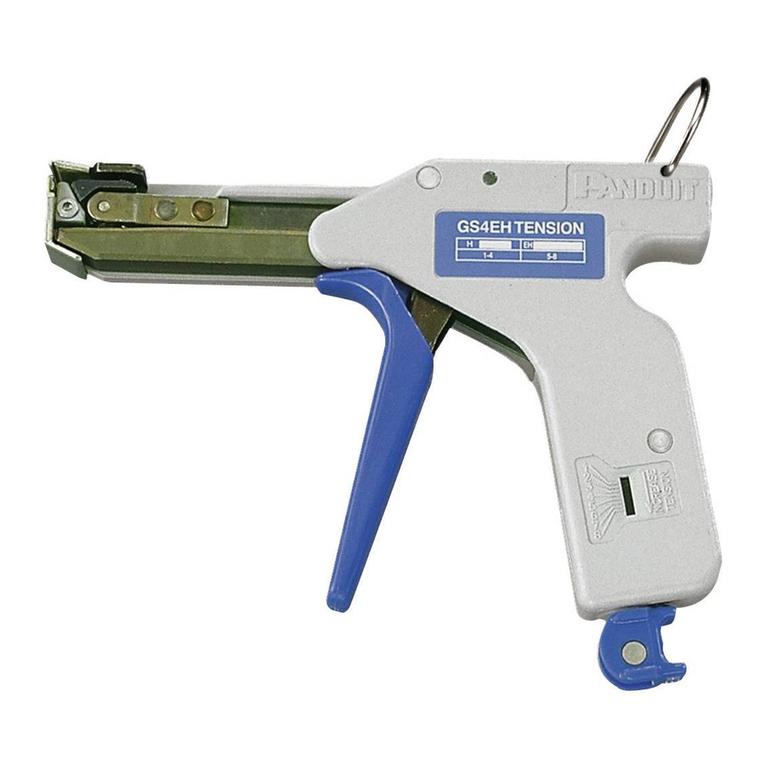Slammer Tool Slammer User manual

The Slammer is a multi-tool combining
a sledgehammer impacting on a digging
bar and an axe head.
It uses the downward force of the
inner bar to slam the cutting blade
through tough ground, soil, roots,
wood and concrete.
WHAT IT IS AND HOW IT WORKS.
A NOTE FROM INVENTOR, TJ IRVIN
“Congratulations on purchasing a Slammer tool.
I didn't initially make the Slammer to sell commercially. I just wanted a simple,
indestructible, multi-use tool for myself for tough, labour-intensive jobs.
I used to use a crowbar (digging bar), mattock/grubber, axe and spade when
dealing with hard ground, roots, rocks, concrete and well-compacted soil types
(clay, sedimentary, conglomerates). However, once I started using the Slammer
I found not only did it take less time to complete a task, it used a completely
dierent set of muscles that did not hurt my back. The key to this was to grip the
bar with my hands but use my legs to get my body to move the bar up and down,
rather than my arms. The other big feature was the blade design. Once the tool
was driven into an ugly patch, to get it out was a lot of work. But by rocking the
5-sided blade from side-to-side it “walks its way out”.
Clients, co-workers and friends saw my Slammer and asked if I could make
one for them. Then things just escalated through word of mouth and the
Slammer Ltd was born.
The slide-hammer concept has been around for a long time but the design
and materials used for the Slammer has been a 23-year evolution of countless
prototypes to make it as sturdy and robust as the one you see today.
I filed a PCT patent 583181 in 2008 and took the Slammer to agricultural,
horticultural and trade shows where it has been well-received by a very diverse
range of customers.
This manual aims to provide you with a few tips and uses that I have learned
along my Slammer journey. Other techniques have been shown to me by
customers who have provided comments and feedback. Please get in touch to
let us know what you think of the Slammer and what you use it for.
HAPPY SLAMMIN'!
TJ “Slammerman” Irvin”
5-sided blade
rock side-to-side for easy
retrieval when Slammed deep
in ground, roots or stump
Abrasion resistant
steel blade for
heavy duty use
Internal damper
to reduce noise
and vibration
Globally patented design
types of high grade steel
Maintain good body
posture - no twisting
or swinging
Anti-pinch
rubber sleeve
Focused energy
= precision digging
Slide-hammer action
32

OPERATOR INSTRUCTIONS
Use ear protection
The Slammer produces a loud
repetitive noise.
Use eye protection
Objects may become airborne
when using The Slammer.
Wear protective footwear
and gloves
Be aware of objects
and cables underground
Always know before you start digging.
Inner Bar (male)
Upper section
Anti-Pinch
Rubber Sleeve
Use your back
Engage leg and core muscles to lift the
inner bar/upper section as opposed to just
your upper body strength. Use gravity and
the natural weight of the Slammer to slam
it down, then rock the tool from side to
side to dislodge and walk the Slammer out,
without straining your back.
TIP: When walking with The Slammer, hold it in 2 separate
pieces - one in each hand.
Blade pipe (female)
Lower section
To assemble, carefully insert the upper
section/inner bar into the anti pinch
rubber sleeve and lower section/blade
pipe. Take care not to trap hands or
fingers.
Safety warnings and hazards
Sharp! Heavy! Use with great caution
and care.
Always use the Slammer with respect and
care to others.
Severe pinch risk:
The Slammer is a
2 part tool. Take
care not to trap
anything between
the 2 parts.
Wear gloves and
grip the upper
section by the
handle only.
Use your leg or
core muscles to
raise and lower
the slide bar, as
opposed to just
your upper body
strength.
DO
DON’T
54

Always know where you are digging.
Be mindful of underground cables,
pipes and other objects.
Use the Slammer like you would a crow bar to
break up the soil. The blade is for cutting and
chopping, not shoveling, so you will need a
separate spade to remove the broken soil.
A helpful hint is to mark dierent depths
on the female/bladepipe part of the tool to
know when you are deep enough or where to
expect service lines (sewer, power, phone.)
If digging in sod, cut around the area you are
digging, chop in two, then cut under to get
perfect bits of sod using just the female/blade
pipe/lower part of the Slammer (which can be
used without the inner bar.)
When digging fence posts use the Slammer
to break up soil then lift soil out with tool of
The only time in life you
start out on top is when
you are digging a hole.
DIGGING AND FENCING
“”
TIP: When digging, deep slam from
your knees and try not to use your back.
choice eg. hand auger, post hole digger, post
hole spade. (you can use the female/blade
pipe/lower part of the Slammer but slow.)
When the blade is deeply lodged in the
ground, rock tool from side-to-side
to dislodge.
Tamp at the bottom of the hole with the
male/inner bar/upper section by itself, upside
down, handle to the bottom of the hole. Add
the rammer and foot attachment to Slammer
tool to pack soil even tighter.
(See website www.theslammertool.com
for further details about rammer and foot
attachments.)
Slammer blade with rammer
accessory attached.
76

The bigger the hole the faster
the tree/plant will grow. Use
the Slammer to aerate the soil
deep and wide.
Remove all existing plants,
roots and rocks and loosen the
soil. It’s not necessary to lift all
the dirt out of the hole.
Mix in compost, fertilizer, blood
and bone.
Once planted, pack well and
stake if necessary. Add water to
fill in gaps.
PLANTING TREES AND PLANTS
98

Make sure the blade on the Slammer is sharp.
Use the Slammer to cut around the root ball.
Find main roots and slam through. Continue
to slam on an angle to form root ball.
Lift out rootball then place into fabric, pot,
tarp or whatever will keep the root ball from
breaking up.
TRANSPLANTING
Tie or cut back plant to gain access to main base of plant.
Cut into root base the rock blade from side to side to walk out.
Pry roots apart. Cut root ball around desired cutting and keep
root ball together. Try to keep damp and replant as soon as
possible. This cutting may need sone pruning above soil to
minimize shock. In dense bamboo roots you may have to cut
multiple times when prying out.
With extended bamboo work it is advisable to use two people
with a slammer each to work and lift together.
CUTTINGS OF FLAX, BAMBOO
OR LARGE GRASSES
TIP: Tie a ribbon/string to
indicate north, then when
replanting make sure this
indicator is pointing north so
the plant has the same aspect.
1110

With the Slammer's sharp
5-sided blade locate main roots
and obstacles. Do this with the
female/bladepipe/lower section
of the tool first.
Chop surface roots. If roots are
too large, work further from the
stump where the root narrows.
Cut underneath root and saw,
chop or slam completely. Work
back to main stump using the
Slammer to loosen soil under
roots. Try to dig a hollow on
one side so you can pry the
main ball over.
REMOVING STUMPS, WOODY WEEDS
AND BAMBOO
Continue to cut and pry until the stump moves.
Once stump is moving, remove material and cut taproot
at bottom, then pry out of hole. Some stumps will
require a large solid pry bar to do so. If the Slammer
tool is bending, the stump is too heavy or there are still
roots connected. There is a limit to the strength of the
Slammer blade pipe. Be aware of it's limitations and if it
does bend it needs to be straightened (see maintenance
instructions on page 22.)
12 13

BREAKING UP CONCRETE AND ROCK
Both the 9kg ad 6kg Slammer blades and the
chisel point Slammer tool are very ecient at
breaking up concrete.
Once cracked, follow the crack and break up
into bits that you can carry. Works extremely
well on asphalt to square up potholes for
road repairs.
The Slammer is very good working in
conjunction with a concrete cutter to remove
concrete accurately. Ideal for plumbing,
drainage, electric cable repair and digging
with precision around dangerous areas where
powered equipment cannot access.
The Rammer attachment with foot is great
for tamping/compressing areas in corners
and tight spaces where you cannot get a
vibrator/compressor.
The male/inner bar/upper part of the 9kg
slammer tool also fits the chisel point
blade pipe.
Nothing is forever
TIP: Slammer tools are very useful
in emergency first response and
search and rescue situations such as
earthquakes and rock falls.
1514

As the Slammer blade is narrow it works best on hard
wood. It can get jammed on soft wood.
Choose straight grain pieces for splitting and kindling.
Save the knotty bits for the wood splitter or as long-
burning, all night logs.
Instead of putting wood on a block, put wood on a hard
surface with a piece of plywood underneath, then step
up so that the Slammer blade is level with your feet.
SPLITTING FIREWOOD
Ye who works to
get the wood gets
warm twice.
“”
Split from the outside using the blade with the grain for
large rounds and in half for small rounds.
The Slammer can be used to gain leverage when sawing
logs so that rounds fall away from logs. It is also helpful
for turning big logs over and un-jamming stuck saw-
blades.
TIP: Get an old tyre, put around wood so as the wood splits, it stays standing to
be split again.
1716

REMOVING TILES, ADHESIVES, ICE
AND HARDTOREMOVE SURFACE
COATINGS.
Taking up/removing tiles,
lynoleum, adhesive, ice
and other types of surface
coatings can be a tough job.
The Slammer tool blade does a
great job of getting underneath
tiles and breaking them up.
However, the tile and ice
blade is even better with it's
45 degree straight edge blade
and larger surface area. It
works to remove floor coatings
without damaging the concrete
underneath. The blade is made
from abrasion resistant steel
and keeps a good edge for
hard adhesive.
The male/inner bar/upper part
of the 9kg slammer tool also
fits the tile and ice blade pipe.
TIP:Works well for ice, dried mud,
euent, linoneum and other hard to
remove surface coatings.
1918

ANCHOR POINT
Your Slammer is very strong but only as strong as the ground
that it is driven into.
The blade must be perpendicular to the load being pulled.
Angle the Slammer away from the load and drive deep for hard
soils. For soft soils (mud, sand, loam and the like) a plate must
be used.
Monitor bending, if tools begins to bend, stop! Straighten
the tool by bending it back in the opposite direction, Then
anchor better using a larger surface area (eg. plate, log, spare
tyre or anything that improves the surface area perpendicular
to the load.)
We recommend a plate 50cm x 50cm square, 5mm sthich
with a 10cm x 20cm rectangular hold in the meddle to shackle
through. (This plate can also double up as a cooking plate over
an open fire.) With the plate you are displacing the weight with
surface area. The Slammer is used to dig out the area that the
plate will be placed.
Then the Slammer is slammed in behind the plate so that the shackle/winch rope is
attached to the Slammer.
Remove by rocking the Slammer tool from side to side to work the blade out of the hole.
20 21

MAINTENANCE OF YOUR
SLAMMER TOOL
Brush dirt o after use and wipe it with a penetrating oil. Keep dry.
The outside may show rust spots but the metal will not structurally rust.
Lightly grease the inner bar/male section and wipe o excess
Slammer tools have a noise-dampening, shock absorbing woollen
bae inserted at base of the shaft of the blade pipe. With use over
time, the woollen bae wears down and the noise will get louder (metal
hitting metal.) You can use a 25cm by 3cm strip of woollen blanket
or purchase a pack of 10 at www.theslammertool.com. To replace the
woollen bae, roll up the strip of wool and insert into the blade pipe.
Use the inner bar to push the bae to the bottom of the pipe.
If the inner bar of the Slammer ever gets stuck in the blade pipe, the
woollen bae may have become worn, damp or dislodged. Secure the
blade, twist and pull out the inner bar. Remove the old wool by using
some number 8 wire to twist and hook it out. You can also flip the blade
pipe upside-down and hit it so the debris falls out.
For further information see our instructional
maintenance videos on the Slammer tool YouTube
You can also follow the Slammer tool on social media
USES FOR THE SLAMMER TOOL:
vegetation maintenance, transplanting, tree
roots and stump removal, tree-planting, fencing,
landscaping, construction, demolition, cutting stone
and concrete, splitting wood anchor point for 4WD,
emergency first response, ditch-digging, drainage,
underground cable repair, flag/fishing-pole holder,
tent pole…and many more.
When sharpening the blade, user a grinder with a
grinding disk (not a cut o disk.) Hand files are good
for removing burrs. Angles depend on use. Standard
rule - for hard concrete, rock or stone use a broad
angle. For cutting roots, bone, wood use a sharp angle.
The Slammer has a sharp angle when first purchased.
Over time, with lots of use, the bottom tip of the inner
bar (male section) may “mushroom” slightly and could
start to jam. To prevent this, grind down the tip.
Under incredibly heavy loads, the Slammer may bend.
It can be straightened again. Find the apex of the
radius and apply pressure in the opposite direction. (ie
flip it over and apply same force that bent it but in the
opposite direction.) Or you could take the tool to a
local engineer to straighten with a large heavy press.
22 23
Table of contents


